A few seemingly slapdash dabs with a bamboo brush and- viola! a haiku materializes on silk. A visual haiku that celebrates China’s brooding, majestic natural beauty. The timeless willowy rock fastnesses, lotuses, birds, Koi carps, insects- together they make up the imperial land’s classic image.
The traditional Chinese art of ink and wash, though coming to life with a few light strokes, is an art mastered over years- undeterred by what artist Rongmao Wang calls the ‘many setbacks’ on the way.
Wang’s own exquisite art was perfected over a long journey- one that began when he was 12, that took him to the Shantou University in Chaosan, and later to foreign lands as an ‘ambassador’ for China.
He brings to Colombo greetings from our ancient East Asian ally, with a three-day exhibition organized by the Sri Lanka China Trade and Investment Council at the J.D.A. Perera Gallery down Horton Place. It concluded this week.
The soul of the vast empire is symbolized in his remote but romantic landscapes. The most arresting are the craggy, austere rock mountains full of mystique. But all across the gallery, you see reflected the seasonal cycle across the year. The Melody of Autumn has blotches of orange and pink in dark misty rockscapes and pools- all seen from far away. Waterfalls meander down steep mountains in wintry dusks. Flycatchers add their blazing red to the spring.
The signature of the artist is a yin and yang seal in red, but what the artists cherish as a more telling mark of their individuality is their unique brushstroke.
What should be indispensable in the Chinese artist’s tool box are ‘determination and instinct’- says Wang- two things, you remark, not necessarily inborn but able to be fostered.
Brushed to the edges of the paintings are poetry in calligraphy- itself an ancient art.
Wang is also a master of sculpture, ‘high temperature colour glaze painting’ and decoration. Cheery jewel-like apples sculpted clustered on a bonsai tree are a symbol of peace and happiness. A piebald sow-matriarch in ceramic, surrounded by pudgy sucklings, is a symbol and charm for a ‘rich family’.
The glaze paintings have a charm of their own- composed of dense rough blotches in contrast to the ethereal strokes of the ink-and-wash, a more wooded beauty.
The art is symbolic while capturing a natural beauty that is abstract and material at the same time. Pomegranates bursting with pearl-like seeds symbolize Immortality and Prosperity. Good Harvest is ripe plums. Feathery purple flowers with pink fairy-like butterflies stand for Prosperity.
Stunningly, the silk tapestries and sculpture were done in little less than two months- Wang having got his invitation sometime after Easter Sunday. That is a clue that reflects the meditative joy that makes Chinese art not culture- but joie de vivre itself.
(Pics by Amila Gamage)
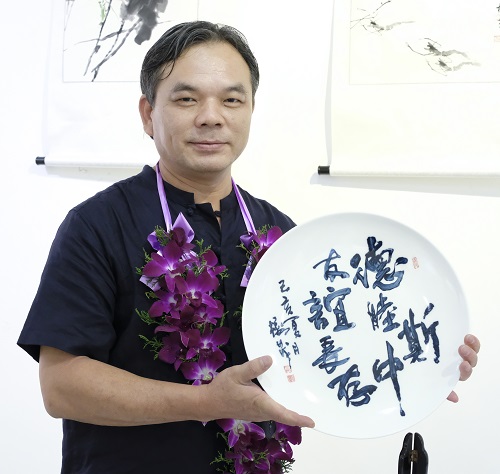
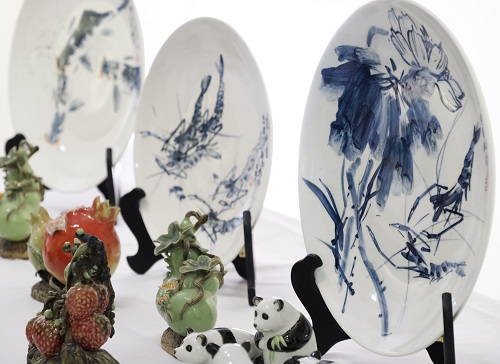
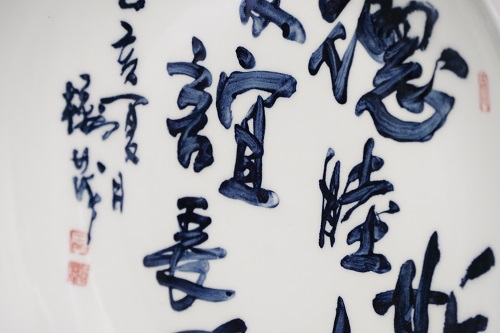
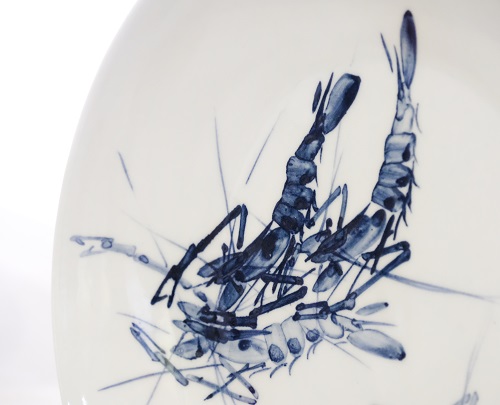
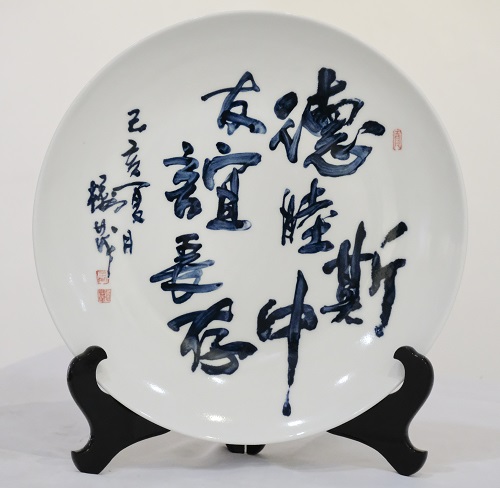
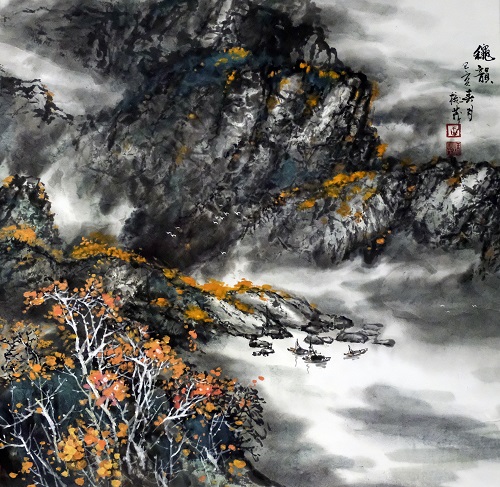
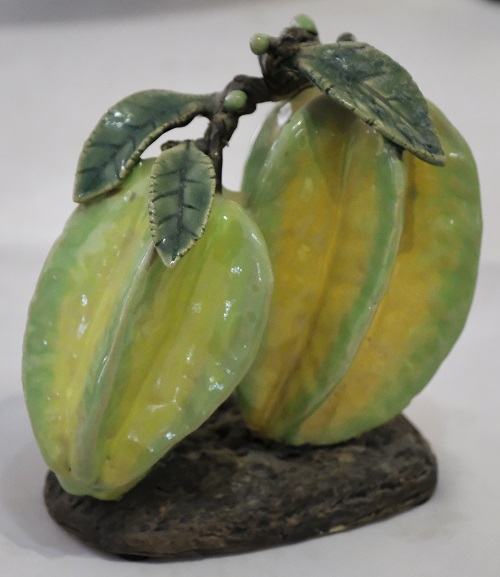
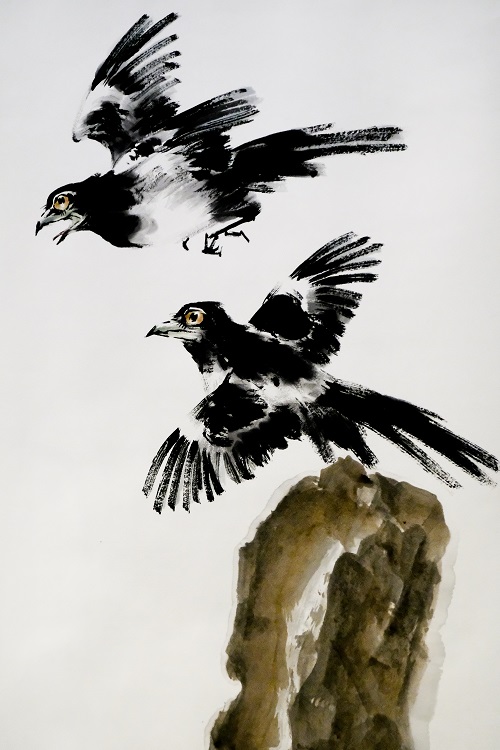
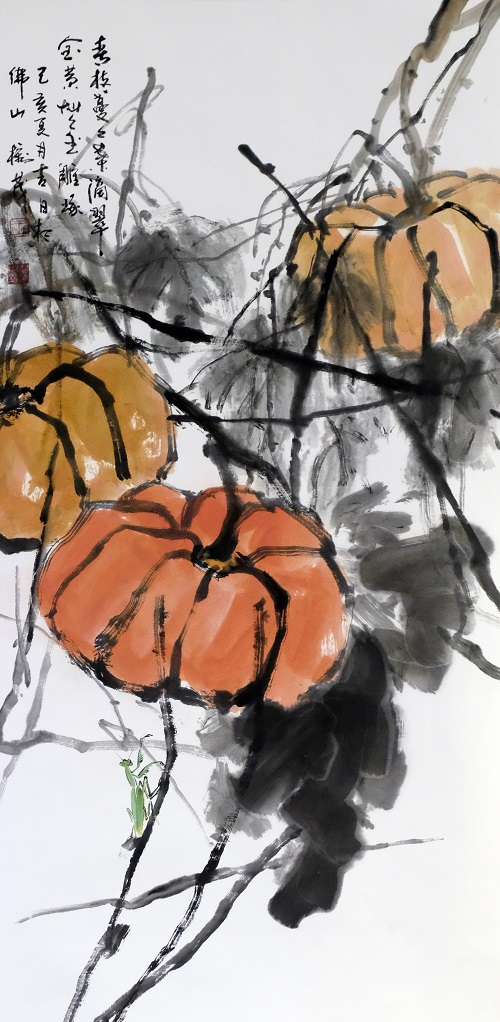
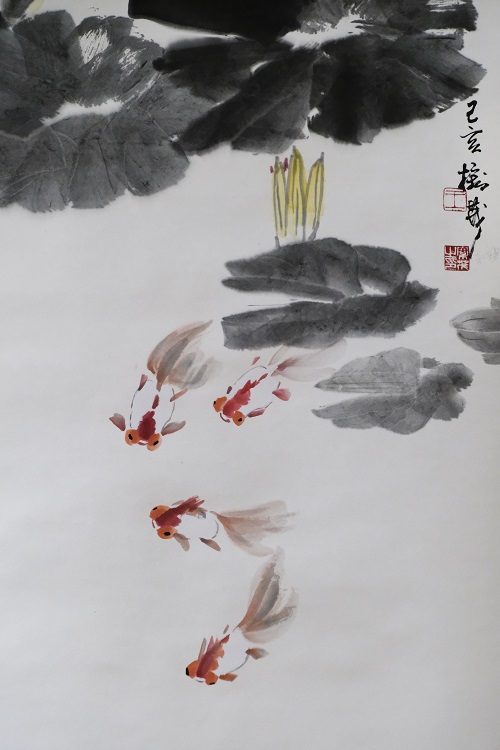
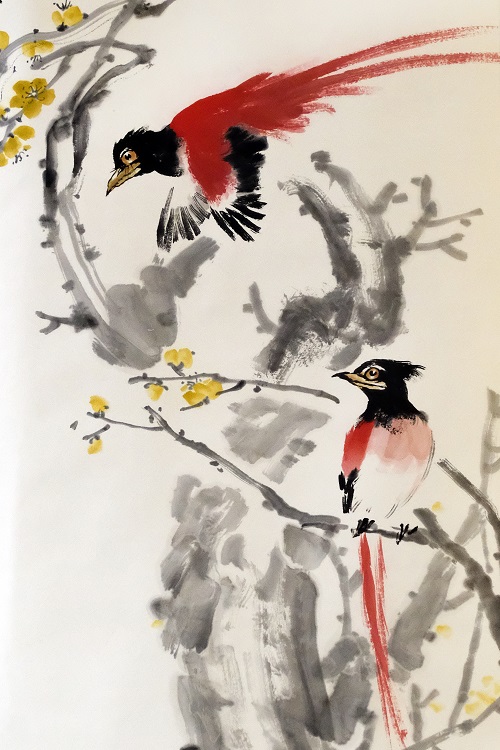

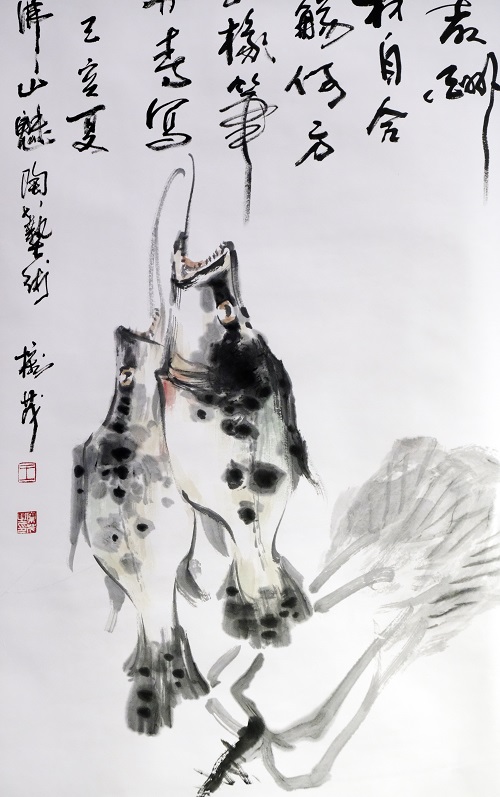
Leave Comments